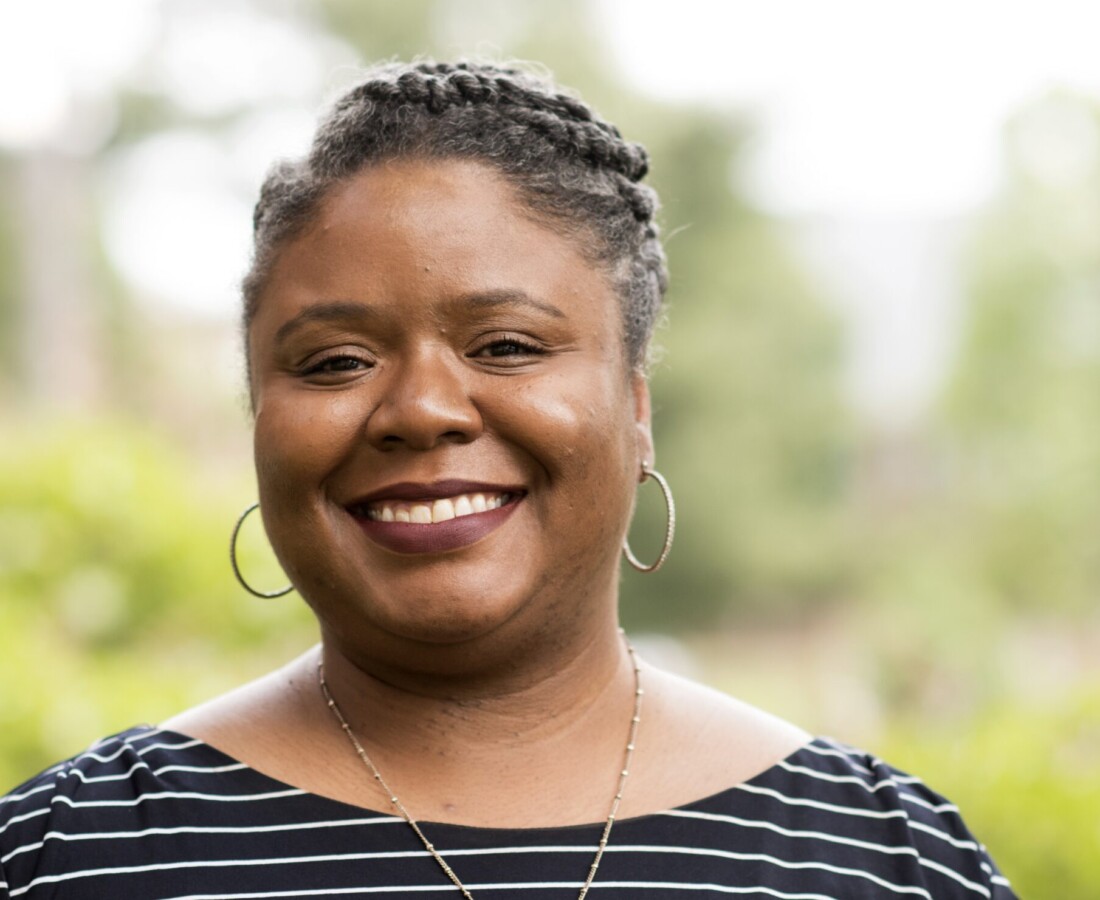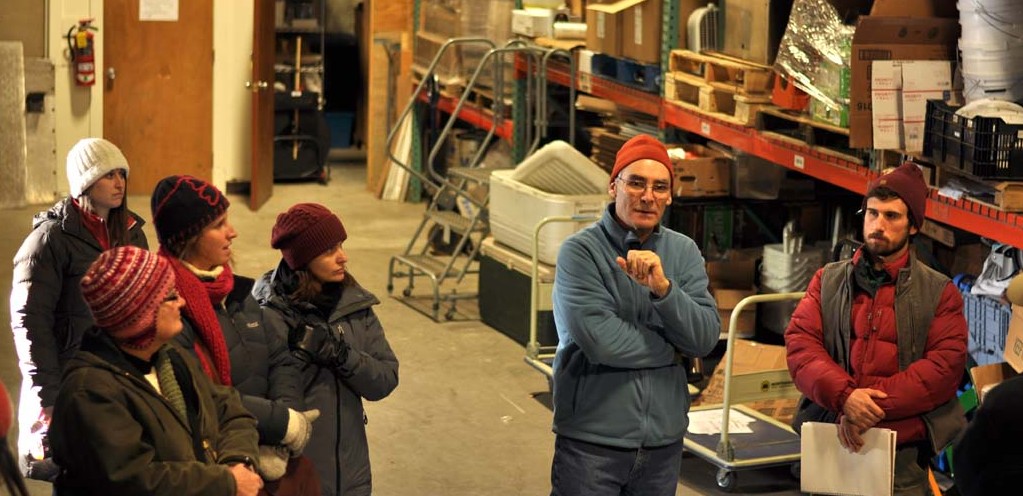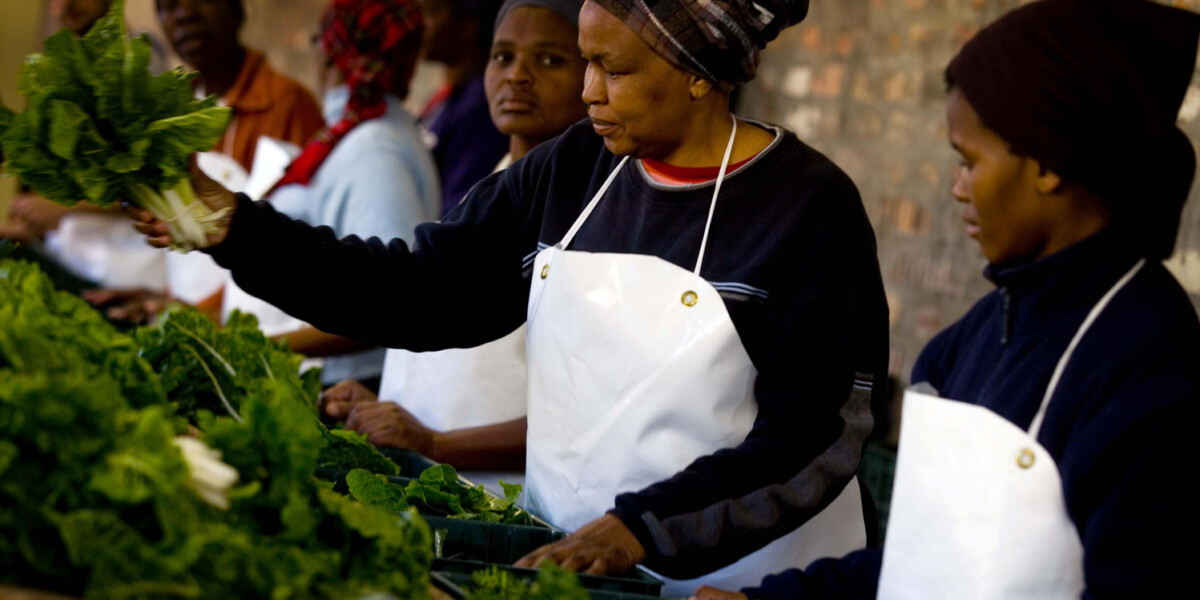How do stakeholders find common ground when they share the same goals but hold vastly different opinions?
Simone Washington, the social mission strategy and policy manager at Ben & Jerry’s Homemade, shared a pragmatic and productive approach to building consensus in her 2018 workshop, “How to Become Allies Fighting the Same System, Role Play, Power Analytics, Conflict and Resolution Techniques.” Her session was presented to students in the UVM Breakthrough Leaders for Sustainable Food Systems Program last June.
This year Washington is teaching a variety of workshops including What is Social Equity Work and How to Lead It? during the 2019 program.
Washington is responsible for helping Ben & Jerry’s translate its three-part mission, progressive values, and linked prosperity framework into innovative, inspirational internal programs and initiatives, and external partnerships and projects. A dedicated social justice advocate and self-professed “innovation junkie,” Washington has over 16 years of experience challenging conventional thought and practices in the nonprofit and philanthropic sectors. Her work is focused on creating progressive structural change using a racial equity lens with an emphasis on systems thinking and design.
We talked to Washington, an instructor for UVM’s Breakthrough Leaders program, about the art of building consensus.
How do stakeholders find common ground when there are very different points of view?
We are quick to position ourselves as adversaries, as opposed to positioning ourselves as people with needs to be met. Often when people have divergent perspectives and identities, it’s hard for them to find commonalities on which to build trust, and to use those differences to work toward building creative solutions.
For Breakthrough Leaders students, I focus on how to build consensus with large multi-stakeholder groups who share a common goal or set of goals but have a difference in opinion on how to achieve them. Participants develop an understanding of how power dynamics and cultural differences can affect a situation, and how to apply an equity lens when addressing complex conflict.
We use Ben & Jerry’s negotiation process with Migrant Justice to implement Milk with Dignity, a worker-driven social responsibility model, into its existing dairy supply chain. Participants in the Breakthrough Leaders program hear accounts of the process from actual stakeholders, and engage in a role play scenario where they engage in their own negotiations process.
What will students will take away from this exercise?
It’s my hope that this type of exercise will help the participants develop a pragmatic approach to engaging with stakeholders who hold different opinions, identities—such as racial, cultural, gender, socio-economic status—that will equip them with the skills to actively listen to one another, isolate the people from the problems or issue, and identify the unique attributes and resources that each party brings to the table that can be useful in addressing the problems. Additionally, participants gain practice in being self-aware when working with diverse groups and learn to take on the hard conversations that lead to building relationships across differences.
Do you include lessons that Ben & Jerry’s learned from working with Migrant Justice?
Yes, we invited Rob Michalak, director of social impact, and Cheryl Pinto, global values-led sourcing manager, both of whom led the negotiations for Ben & Jerry’s to talk to the group. They provide insight into what we felt worked, what we would do differently, and how this experience transformed the company. For example, because of this process, we recognized that we needed to overhaul our dairy sourcing model. The new model has been evolving to truly embody our Linked Prosperity model.
Milk with Dignity is an apt illustration of how we are working diligently to lift the voices and meet the needs of the “invisible” stakeholders in our value chain. This process will potentially change how we approach business from hiring to how we support systemic change in communities, globally. This marks a new era in how we will show up in the world as a social justice company and carry forward the vision of our co-founders.
Can you share examples of any other socially-driven projects Ben & Jerry’s is working on?
The company made a commitment to embedding racial and economic equity into its policies, practices, and programs. We have partnered with Race Forward and Frontline Solutions to conduct our first-ever racial equity assessment. This will help the company to identify ways that we can actively create inclusion and access through our Linked Prosperity philosophy for historically marginalized and underrepresented communities touched by our value chain.
How long has Ben & Jerry’s had a social mission?
The social mission has always been at the heart of the company. The co-founders were committed to finding a new way to do business. Their vision was realized in 1988 when they developed the Linked Prosperity Model which states all three parts of our mission— product, economic, and social—must thrive equally in a manner that commands deep respect for individuals in and outside of the company and support the communities of which they are a part.
Registration is now open for the 2019 UVM Breakthrough Leaders for Sustainable Food Systems Program
A variation of this story was originally published on May 25, 2018 on UVM’s Food Feed.





